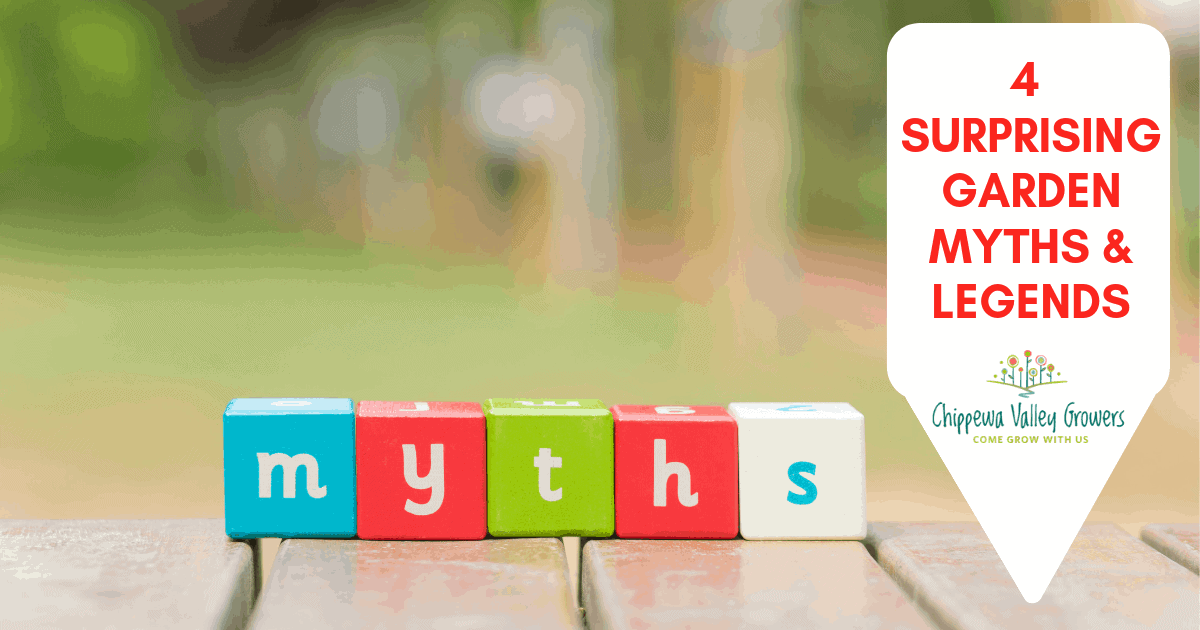

Call them gardening myths, legends, old wives tales, or wise sage from grandpa. Whatever you call them, they have become part of the growing culture whether they’re valid or not. Here are a few that have pretty strong fan followings and some insight into their accuracy.
Planting by the Moon
For centuries, farmers and gardeners alike have made it a practice to plant and harvest by the moonlight and associated phases. One theory behind this is that, because the moon’s pull can increase the ocean’s tides, it also affects water within the soil. Following that logic, a new and full moon would pull more water up in the soil. So if you planted at night, the hydrated soil could help accelerate the germination process and ultimately give you better results.
While this logic isn’t entirely off base, those of us that live near the Great Lakes can debnk the theory. We know that the lunar influence has very little effect on the lakes. In fact, they experience approximately less than five-centimeter tide variation when the forces of both the moon and the sun combine.
We may plant at crazy hours around CVG, but we still appreciate a good night’s sleep. So we’ll let the moon do its thing, and we will do ours. It’s better for both of us.
Sugar to the Soil
Rumor has it that adding a few tablespoons of sugar to the soil that holds your tomato plants will create a sweeter crop. As you might have guessed, there isn’t much validity to this approach as tomatoes gather sugar from the top (via photosynthesis) instead of the bottom. But, if you enjoy sweeter tomatoes, we know it to be true that some sugar (try raw instead of processed) sprinkled onto your sliced, fresh fruit, does in fact make them sweeter. It’s a way to take an already-delicious snack and make it even more memorable.
Oh, and picking the right variety will help determine the sweetness. For instance, smaller varieties such as cherry and grape, tend to be sweeter.
Flowers around the Veggies
Ever see rows of marigolds weaved into vegetable gardens? It’s a long-held belief that these flowers repel pests, and that belief is correct. Specifically, they repel nematodes and other garden pests that target tomato, eggplant, and pepper plants. They even help keep rabbits, deer, and rodents from gardens because of their pungent smell. In addition, they do supply nectar for butterflies and add vibrant color to a garden.
Good Friday Gardening
Good Friday is often referenced as an ideal day to start planting, particularly potatoes. While this theory is an okay one because those types of plantings do best in cooler weather, it is not entirely accurate. Because Easter and Good Friday can vary between March and April and climates vary so dramatically from year to year, this isn’t the most sound schedule predictor. Instead, watch the frost dates in whatever zone you may fall in. Plant as soon after the last frost as you can, and you’ll have better chances at success.
Whatever myths and legends you may have heard, no matter how far fetched they are, test them out. You never know, it might actually work or at the least give you a great story to share! Oh, and how we would love to hear them next time you stop by the greenhouse.
If you want to learn more about flower symbolism or to learn more about what is happening at our Emerald City, please sign up to join our email list.



